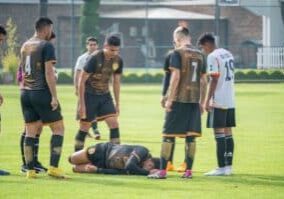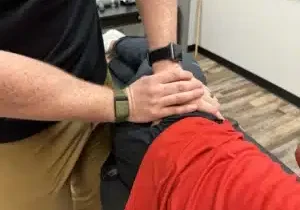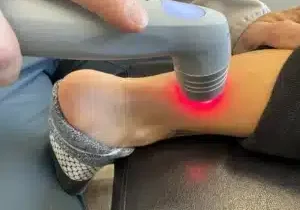 Work, family, sleeping, running, lifting, swimming and even commuting can all cause aches and pains. This list is not all-inclusive. Sometimes the pain just goes away over time. Sometimes it doesn’t. This blog post is for the times it doesn’t. So when should you ignore it and when should you call Head2Toe to make your next appointment?
Work, family, sleeping, running, lifting, swimming and even commuting can all cause aches and pains. This list is not all-inclusive. Sometimes the pain just goes away over time. Sometimes it doesn’t. This blog post is for the times it doesn’t. So when should you ignore it and when should you call Head2Toe to make your next appointment?
When Starting New Habits or Patterns
New activities, new shoes and changes in habits or patterns can cause mild lingering soreness. If things go away within a week after starting a new activity or making some other change in your life or habits then you’re probably fine, especially if the soreness improves within a few days. Maybe you already know certain foam rolling techniques or other stretches and exercises that have helped before. Try those out first.
When Pain Lingers
If your pain lingers for a week to 10 days, gets worse with activity or with daily living or begins to interfere with your work or family life then you should probably be seen for an evaluation and treatment. Other red flags to look out for are hearing/feeling a painful pop, swelling and redness in a specific area that persists.
When Aches & Pains Interfere
Chronic aches and pains that don’t go away within a week OR that get worse with activity or interfere with work or family life should be evaluated and treated by a healthcare professional.
Our Goal
At Head2Toe our goal is to equip you with the exercises, stretches, and tools you need to be self-sufficient. We will work with you to develop a practical treatment plan that addresses your condition and prepares you to prevent the next issue from happening. When the next thing pops up that you’re not able to take care of on your own, we’re just a phone call away. Give a shout and let us know how we can help!
How Manual Therapy Can Be Your Key to Pain Alleviation and Overall Wellness
Discover the transformative power of manual therapy for pain alleviation and wellness in our blog ‘How Manual Therapy Can Be Your Key to Pain Alleviation and Overall Wellness’.
Read MoreThe Role of Chiropractic Care in Sports Injury Rehab: A Deep Dive
Explore the essential role of chiropractic care in sports injury rehab in our comprehensive blog ‘The Role of Chiropractic Care in Sports Injury Rehab: A Deep Dive’.
Read MoreHow Your Local Chiropractor Can Help You With Back and Neck Pain
Understanding back and neck pain Back and neck pain can be caused by poor posture, muscle strain, injury, or underlying health conditions. The pain may range from mild to severe and can affect your daily activities. Common symptoms include stiffness, muscle spasms, and limited range of motion. In some cases, the pain may radiate to…
Read MoreRehabilitation Services for Sports Injuries: A Comprehensive Guide
Understanding sports injuries and the need for rehabilitation services Injuries during sports are common and can affect athletes of all levels. Rehabilitation services play a crucial role in helping athletes recover from these injuries and get back to their peak performance. With the right guidance and treatment, athletes can regain strength, flexibility, and mobility, ultimately…
Read MoreUnderstanding Posture Therapy: Techniques and Benefits
What is posture therapy? Posture therapy involves exercises and techniques to improve your body alignment and position. It aims to correct postural imbalances and relieve pain and discomfort caused by poor posture. The therapy focuses on strengthening muscles and stretching tight areas to achieve proper alignment of the body. It can also include education on…
Read MoreThe Science Behind Foot Pain Therapy: Understanding the Basics
What causes foot pain? The most common cause of foot pain is wearing ill-fitting or unsupportive footwear. High heels and narrow toe boxes can put excessive pressure on the feet, leading to issues like bunions and corns. Flat feet or high arches can also contribute to foot pain because they affect the alignment and distribution…
Read More





